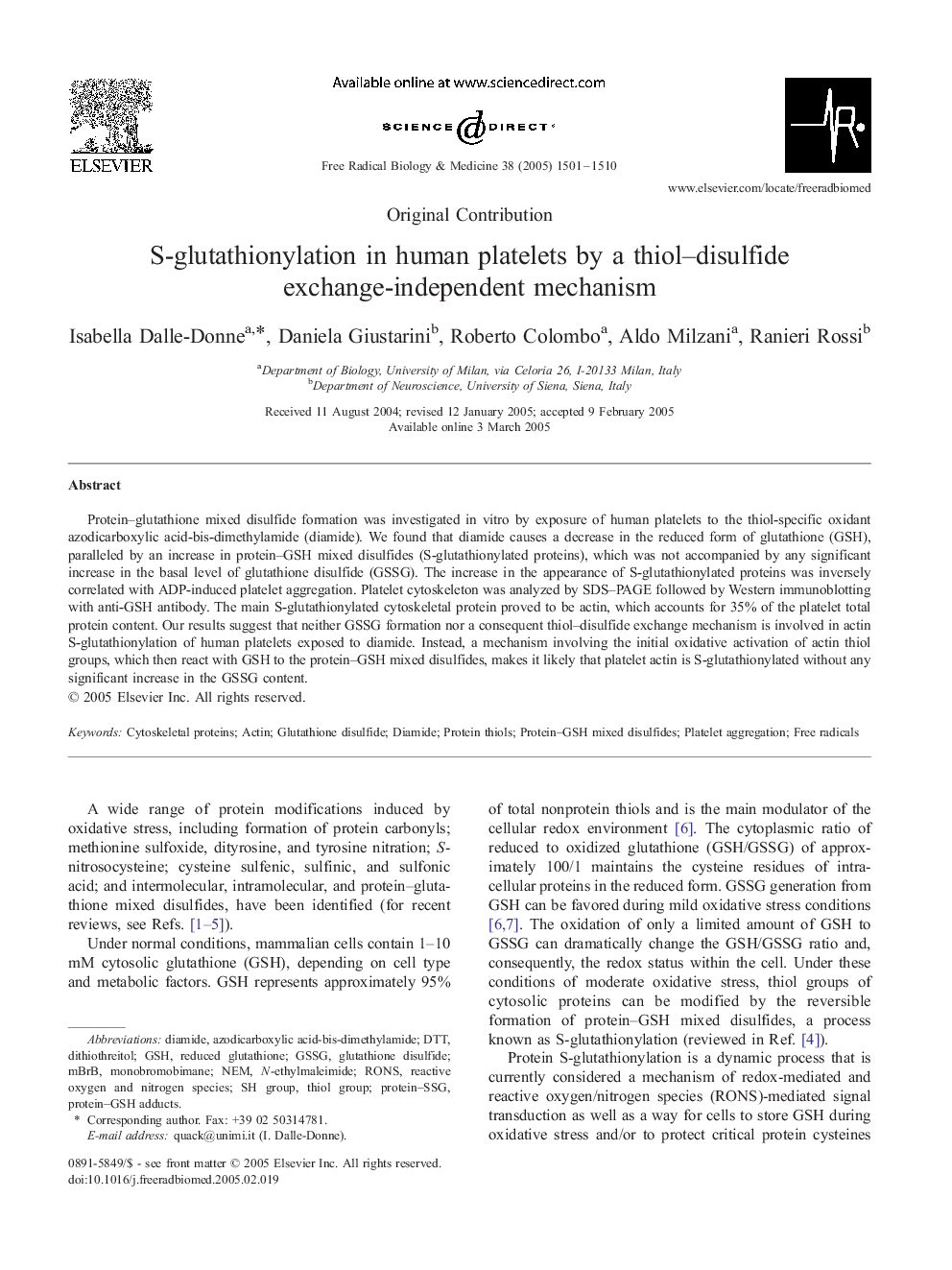| Article ID | Journal | Published Year | Pages | File Type |
|---|---|---|---|---|
| 10739494 | Free Radical Biology and Medicine | 2005 | 10 Pages |
Abstract
Protein-glutathione mixed disulfide formation was investigated in vitro by exposure of human platelets to the thiol-specific oxidant azodicarboxylic acid-bis-dimethylamide (diamide). We found that diamide causes a decrease in the reduced form of glutathione (GSH), paralleled by an increase in protein-GSH mixed disulfides (S-glutathionylated proteins), which was not accompanied by any significant increase in the basal level of glutathione disulfide (GSSG). The increase in the appearance of S-glutathionylated proteins was inversely correlated with ADP-induced platelet aggregation. Platelet cytoskeleton was analyzed by SDS-PAGE followed by Western immunoblotting with anti-GSH antibody. The main S-glutathionylated cytoskeletal protein proved to be actin, which accounts for 35% of the platelet total protein content. Our results suggest that neither GSSG formation nor a consequent thiol-disulfide exchange mechanism is involved in actin S-glutathionylation of human platelets exposed to diamide. Instead, a mechanism involving the initial oxidative activation of actin thiol groups, which then react with GSH to the protein-GSH mixed disulfides, makes it likely that platelet actin is S-glutathionylated without any significant increase in the GSSG content.
Keywords
Related Topics
Life Sciences
Biochemistry, Genetics and Molecular Biology
Ageing
Authors
Isabella Dalle-Donne, Daniela Giustarini, Roberto Colombo, Aldo Milzani, Ranieri Rossi,
